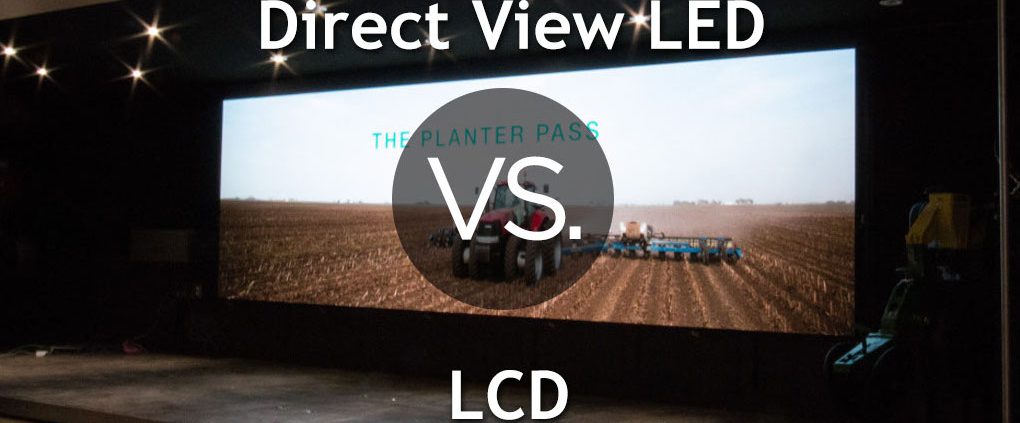Don’t Go Astray with LCD—The Future is LED!
At long last, it’s time to install that show-stopping video wall you’ve been planning. You want it to be bright, flexible, energy-efficient, and cutting-edge—something truly unique and exciting!
But which kind of display should you use?
Until recently, most large-format video walls were built using LCD displays arranged in standard configurations: 2×2, 3×3, 4×4 and so on. This was the preferred method for achieving large video images due, in part to the cost of LED display technology. But now, with efficient, brighter LED technologies and manufacturing techniques, large-format LED displays are economically comparable with the older LCD matrix video walls they so easily outperform.
Liquid crystal displays (LCD) have been popular for years in both the video wall and consumer electronics markets. You have probably already used LCD technology several times already today and the technology is perfect for smartphones, computer monitors, and television screens. But when LCD displays are tiled together to create a video wall, the bezels (or visible edges of the cabinet) create “mullions” which interrupt the video image. Even when expensive “ultra-thin-bezel” displays are used, the mullions are still there dividing the image. Direct View LED panels assemble together with no visible bezels forming completely seamless video walls.
Recent innovations in LED manufacturing allow more brightness, higher resolutions, greater reliability and energy-efficiency than LCD displays with the best color accuracy and refresh rates of any display type available. For large-format video experiences, Direct View LED is the obvious choice. Here’s a quick comparison:
• LCD monitors have bezels which interrupt the image
• LCD monitors can exhibit “burn in” of an image type over time
• LCD video walls require special pullout mounting brackets that allow precise physical alignment and are typically pretty thick
• LCD monitors require frequent color calibration and physical alignment to keep them looking good
• LCD monitors by their very nature prevent smooth curves
• LCD monitors used with complex, non-standard designs require expensive image processors with outputs for each display
• LCD video wall displays typically have much lower brightness levels than LED
• LCD video wall displays are not available in outdoor configurations
• LED displays have no bezels to interrupt the image
• LED displays don’t require pullout brackets and the entire display including the framing can be 3″ thick or less
• LED displays typically don’t require color calibration and the physical alignment does not change over time
• LED displays offer greater shape flexibility including non-standard flat displays, curves, cylinders, thin ribbons, and outside corners
• LED displays are controlled differently with a single processor and only a few outputs required to drive very large displays
• LED displays perform better in high ambient lighting conditions than LCDs (even outdoors)
• LED displays provide a wider viewing angle due to its direct emission of light
• LED technology Is very robust and reliable, even in high humidity and in a wide range of temperatures
Numerous display technologies are available today. Each has value, but the unique characteristics of LED displays may better suit your needs. And LED provides a lower total cost of ownership. LED is more energy-efficient, requires virtually no periodic maintenance, installs quicker, and has a longer usable lifespan than LCD video walls.
Shenzhen-based LED supplier JR Visual Tec offers creative solutions, reliable products, and dependable service for our industry-leading LED display technologies and solutions. Driven toward excellence to meet your standards, JR Visual Tec offers extensive range of LED video walls and video screens to fit your every need. To learn more, visit www.jrvisualtec.com today!






